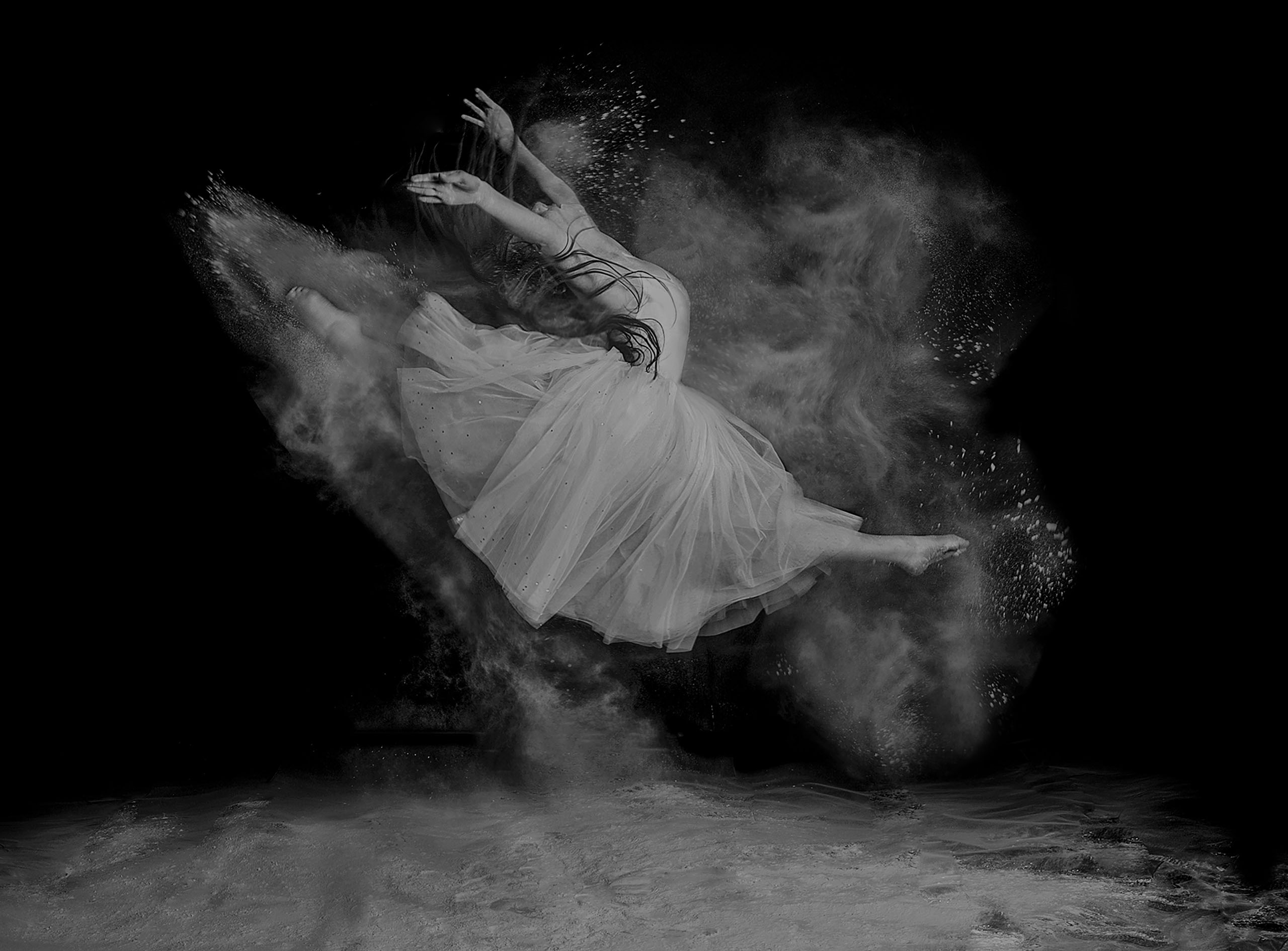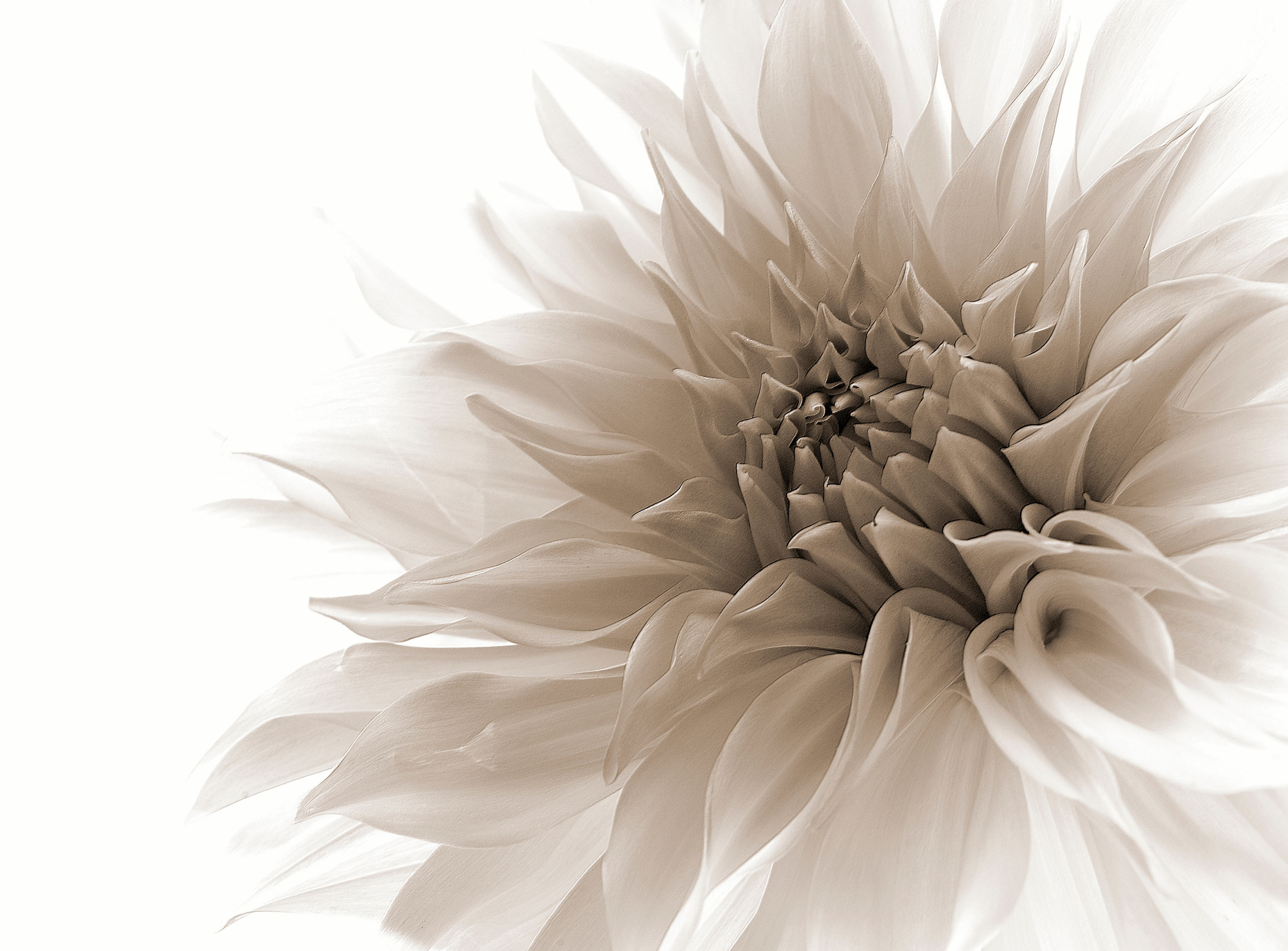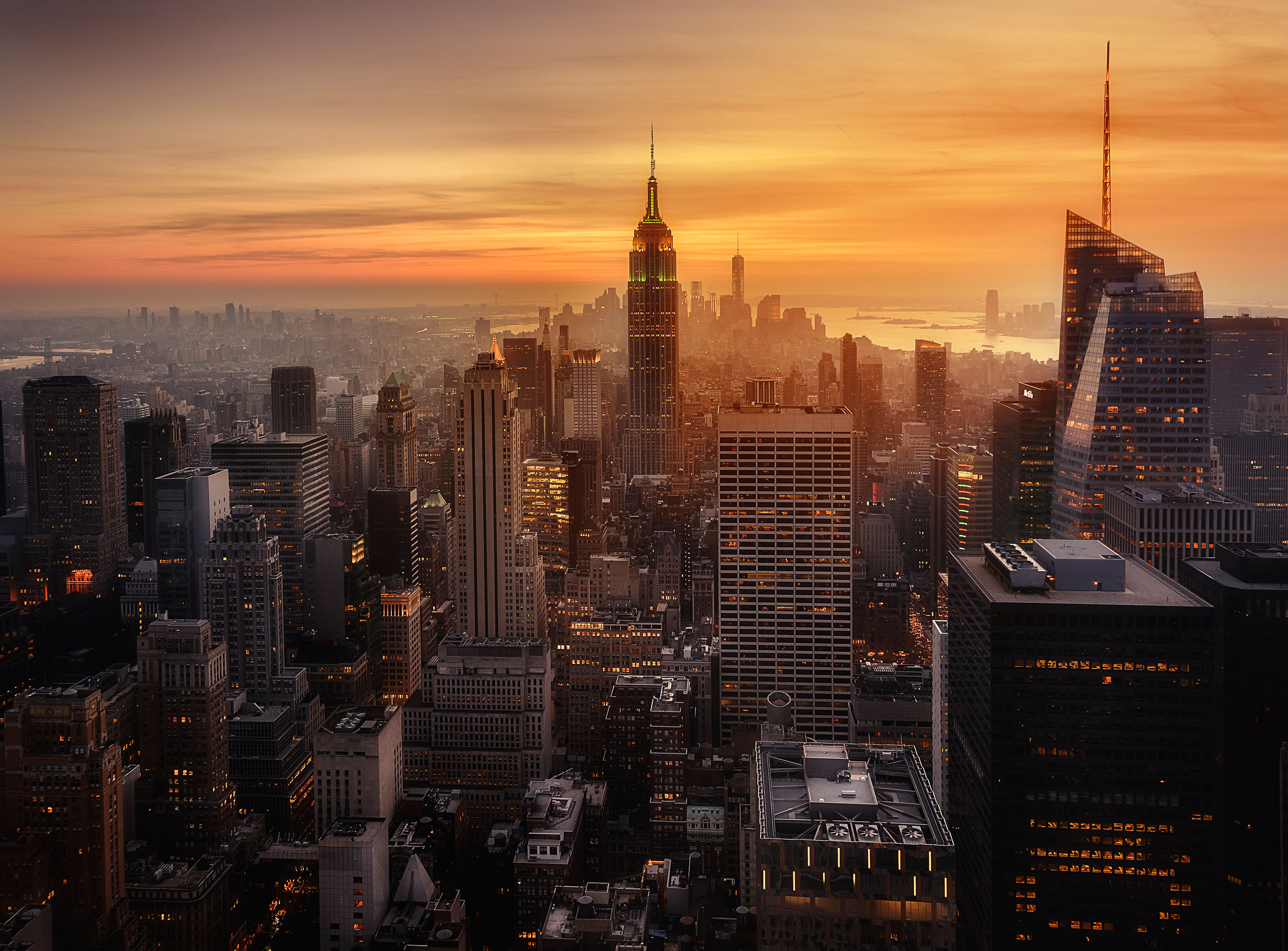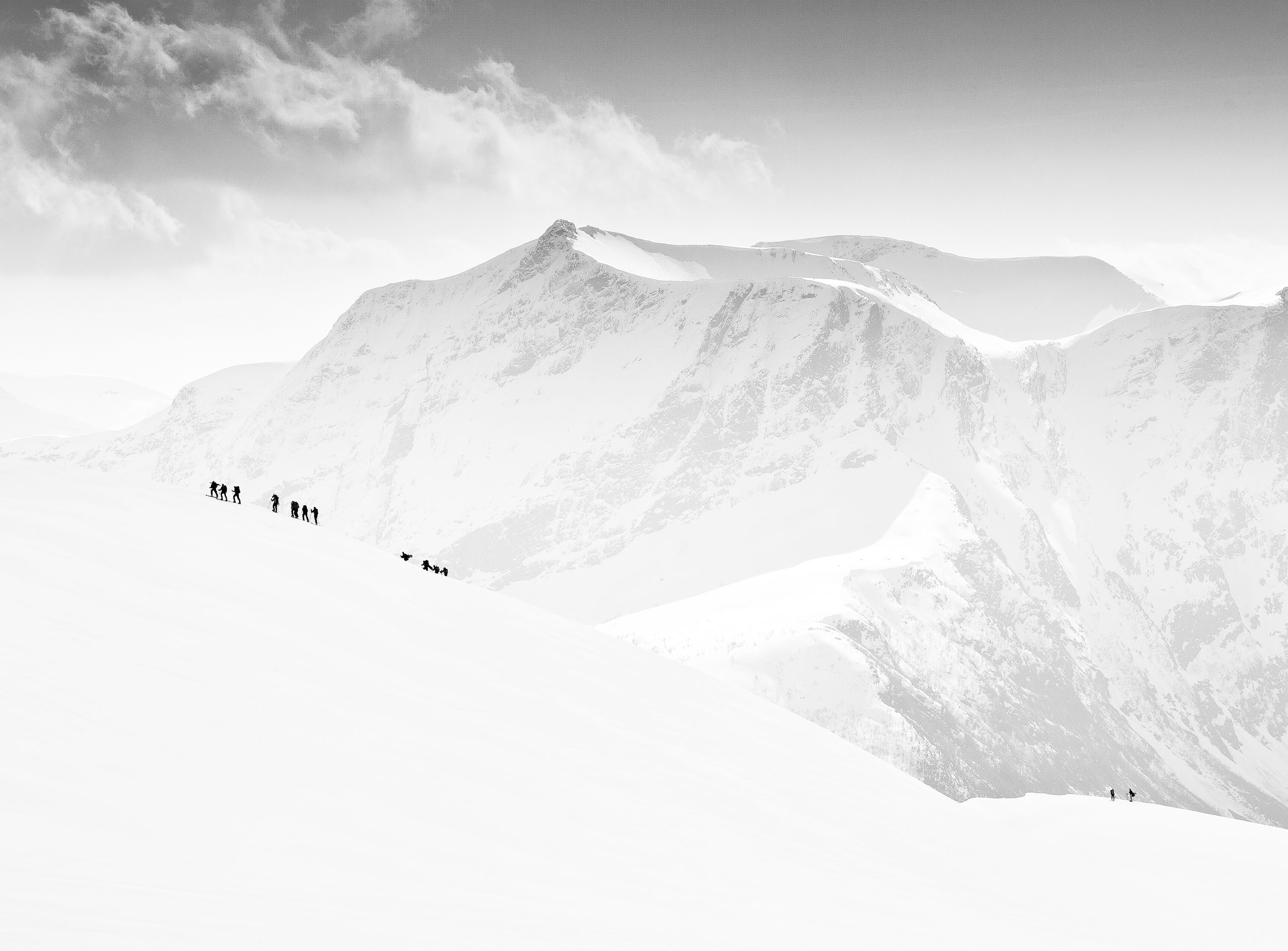SEARCH






|
|
|
|


The world is what we want it to be, the perception is purely subjective. Possibly, the city exists in our mind and our imagination, everything becomes a game, in a dream. Vlad Eftenie
I learned for the first time about Vlad and his remarkable portfolio in 2004 while attending a Romanian online community for photographers, where he was regularly posting his fascinating work. I have never imagined at that time that more than 10 years later, Vlad will agree to give me this interview for the 1x.com Magazine!
In few words, Vlad Eftenie is one of the most dedicated and creative Romanian contemporary photographers. However, he’s not considering himself as a complete photographer, but rather a perpetual seeker of moments of grace, an invisible urban observer, a relentless discoverer of the city secrets using time and emotions, both as tools and ingredients for his visual stories.
Vlad is also an architect and professor at the “Ion Mincu” University of Architecture in Bucharest; he’s author (or co-author) of numerous urban and architecture photo exhibitions, both in Romania (Bucharest, Timisoara, Baia Mare, Negresti-Oas) and abroad (Berlin, Lisbon, Toulouse, Padova, Dublin, Venice, Vienna), numerous studies, projects of architecture/urbanism and articles in professional journals on photography and architecture. Not the least, he won in 2014 one of the most important photographic competitions, Sony World Photography Awards (Open Low light section).
I invite you to learn more in the article below about Vlad and his subtle, inner experiences while exploring the world around as a street photographer!
Thank you so much Vlad for taking the time to participate to this interview! To start, I would kindly ask you to briefly tell us about Vlad Eftenie - the man behind the camera, your hobbies and other projects you are involved in?
Behind the camera, meaning holding the camera, I transform myself, I become everything I want it to be. Even invisible. I am eager to look at the people I’m passing by from the city. Without camera, it is a different story. When I’m not shooting or talking to people about photography I’m shy and introverted. Silent and too much thinking, looking for ways, exploring and marvelling at the surrounding world. I am attracted in communication, psychology and personal development. I’m interested in gestures emotion and the human relationships mechanics and, even more, in what lies beyond what we see and the discovery of these mysteries of day by day life. I like a lot to tell stories, to know people, to explore, to walk a lot, as a pedestrian and to listen to good music. I like the cities and their streets. I have the chance to work with my students at “Ion Mincu” University of Architecture (UAUIM), and to express my full enthusiasm to guide and to illuminate the mysteries of human presence in the world, together with my students. I am active in social media and I have two accounts on Facebook and Instagram that are developing very well and that I care the most about. I write articles about urban/street photography, currently I have a show at public radio station about the way we look at the city, I run workshops and lectures about street/urban photography and I prepare a book about the way I see the photographic gesture, using space, time and emotion as ingredients while looking for what I call “the moment of grace”.
What is your most important experience so far that have influenced your photographic approach and vision?
Short answer: my whole life until I have discovered the photography, about 15 years ago. The experiences I have been through, the music I have listen to, the movies I have watched, the faculty I have graduated, the longings and dilemmas. Everything became congruent when the photography decided to made an unobtrusive, but decisive sign to me. I was feeling that I don’t know anything about the world I’m living in and I needed an instrument. Since then I became ready for it, and the photography opened me an extraordinary way. I have discovered myself and the world I live in. I keep doing it and marvelling everyday, it became a way of life, the more so as I can tell to the others about what I learned, to be useful for them as well.
You master street & urban, among other types of photography. What first attracted you in this kind of photography and why?
I didn’t start it with the street photography. I didn’t know about this trend, neither I had a clue that I can practice it. I was initially photographing my cat, the concerts I was attending, the landscapes seen within my trips in Romania or abroad. All done with a small digital camera (Olympus c300 and then c5050) who has dis-inhibited me and by means of which I passed over the carefully chosen and counted 36 frames barrier for film. I have started to experiment and this took me about 2-3 years. I didn’t have a certain style, I was shooting everything, but I was trying to see it differently, to deepen the perception, to look beyond the appearances. Until one day when I felt that I have exhausted everything I know about the digital camera and I felt to go on film. It was a time when everybody was selling the film cameras to replace them with digital ones, so I managed to acquire professional photo technique at a very good price. From Canon AE1 to Canon T90 and then to Nikon F5, with wide and tele lens, fast and wide aperture, I have simply thrown myself in the nothingness of everyday life and I start shooting instinctively, closing any thought and leaving the intuition and the reactions to lead me. What I have found was fabulous! From that moment I knew what I'll do next. So I have realized that I was chosen by the street photography to go on the decisive moment classic vein, which supposes the harmonization ability with the entire environment and to seize the optimal microscopic point of this ephemeral moment. And to be there, shooting. It appeared the magic and the awareness of a new censorial and emotional world. By searching, I have found out!
You are also an architect and professor at “Ion Mincu” University of Architecture in Bucharest. How do architecture and photography interact and complement each other for you and how did both shaped your photographic vision?
With this question I have set myself when I decided that the only way I can reconcile the architectural profession and passion for urban/street photography is to be myself and to create a fusion, a unique product. So I initiated my doctoral study subject, thus achieving a first in academic research and synthesizing, for the benefit of the architectural gesture, the whole experience gained through photography: the photography as a study tool in architecture, relying both on a rational side but equally including the emotional side, virtually ignored in the scientific study. Thus the course I teach at UAUIM was created and also the entire theoretically argued background of the workshops and lectures on topics of photography. I came out of the empirical, experimental, study and I was delving into the methodical and systematic-al argument. I have theoretically outlined more clearly the photographic tool, targeted more towards the practice.
Photography helps you to know the world and the human nature more deeply. For an architect, they are absolutely normal requirements, with subtle effects in his/her professional gesture. Beyond the attraction to composition, the light relationship with the fullness and emptiness, textures, surfaces, sculptural and cinematic frames, the architecture is for the people, about the people, eventually.
You won the Sony World Photography Awards for Open contest Low Light section in 2014. What this means to you and how this recognition influenced your artistic vision?
This award made me happy, but it is the completely happy and full of hazard result of a subjective decision of certain people, in a certain context and in given time and place. I have intuitively chosen the picture among of hundreds of thousands, they have had to choose among the other hundreds of thousands, and here at the end we met in a single point. Decisive moment! The prize has no changed me in any way, but the perception of the others about me. When you get a recognition outside the country, this finally validates your gesture in front of others. Until then it was you and your passion, and now you are taken seriously, at last. I continue to do what I love to do, photographically.
I know you travel a lot and I also know that you love your home town, Bucharest. Is Bucharest equally offering the photographic opportunities compared to other cities? How do you approach a new city when shooting for the first time: are there specific subjects you are looking for?
I have started my street photography approach in Paris. I was on a trip, taking pictures. Far away, in foreign cities. After seeing what marvels I have discovered by shooting, I wanted to try the same in Bucharest. Maybe I can find out something here I did not know before. But, for that I had to turn myself into a tourist of my own city. We used to think that valuable things must be far away. Therefore, we seek them away and we go away for them. We never think how rich is the world we live in everyday, being somehow tricked by the daily routine that seems to hide everything, that makes it banal. A simple change of perspective transforms everything. I photograph Bucharest almost every day for the last 10 years, it became my daily therapy by means of which I try to keep the routine away, to always stay amazed in front of the things that expect to be discovered and that are already there. They just need to be seen. Bucharest is home, there is always something good to photograph. The autumn is colourful, the winter changes the landscape completely, while the spring brings up the vivid tones.
In a new city I let myself completely driven by mood, emotion, light. Technically and compositionally I follow almost the same routines that define my style. I’m looking for the light, for the simple pictures, for topics that can arise a visual impact. I want to be relevant in terms of what I want to show, to look for the essence. It's good when I have time, I like to come back and to deepen my understanding. There can be always a new layer to be explored. I look at the people, the buildings, the urban spaces while searching for the exceptional moments. I build emotions.
From your perspective what is more important when shooting street & urban photography: the mood, the story behind your images or the moment?
I think the story comprises sequences, the highlights can become decisive, by pushing the trigger that confirms or denies that moment. To see a story, you have to see beyond appearances, to imagine it, to let yourself inspired. This is about the mood and the mood evolves, it transforms permanently at the contact of the everyone’s inside to the outside. It is an ambivalent relationship, an area influencing the other. The emotions convert, the city get shades being constantly aware. The observer becomes connected, alerted and a focus state arises. The space means vibration, the space between the people on the street is not empty, it is full with invisible vibration and the power of thoughts can influence what happens outside. If I want to feel myself invisible, everything depends on me. Then I become invisible! The world is what we want it to be, the perception is purely subjective. Possibly, the city exists in our mind and our imagination, everything becomes a game, in a dream. So I try to take photographs, on street, to feel, to let myself carried away.
Frequently, the beauty of street photography is in the ability to capture the moment in its natural, unaltered essence. What is your relationship to your subjects on the streets: do you prefer to interact or stay invisible?
I am a neutral observer, silent and invisible. I avoid at all costs to be seen as not to alter the story. I like to capture the authentic moments, reactions, behaviours underway, ephemeral moments at the peak moments of their running.
You are of the opinion that we can trigger a spontaneous and deep transformation within ourselves if we are able to see the city, the street and the people from a different perspective. How day-by-day places and people can be perceived photographically from another angles?
Being alert and connected, aware and flexible through perception, we evolve together in time and space, at the same time with the environment, as a system. The camera is just an extension, a scoring tool. It can influence the approach of some new ways of looking, through the enthusiasm that the photographic interpretation of reality taken can provide. The lens cannot see as the human eye, sometimes they can see even better. When I say eye – I don’t say vision. This belongs exclusively to the photographer, it is an expression of his/her life experience and of how to report the emotional experience to the reality. It can be expressed brilliantly when the subject and inspiration become convergent by the technical execution of the photography, by abstraction. It is not even necessary to have a "different angle", the best being the one who answers the spontaneous need to shoot, to best expressing the subject. By coming out of the usual way of perceiving and moving on, of going through the urban space, of seeking new meanings and ways of seeing, new ways of looking can also occur.
Your portfolio is impressive and inspiring and your photographic activity it is highly recognized in Romania or worldwide. What would be your most important advice for the new comers in photography?
Thanks for appreciation, everything I do comes from passion, and it is done with passion, with pleasure, with love, with love for photography and people, for the viewers. I try to help them see, to broaden and positive their perception, to feel confident to look where they don't think they can find something. The advices may be useless without a spark inside, without the grinding need to search, to express yourself, to trigger, to feel the device, to feel like you're on the road. Each day brings a new beginning, we are always beginners. A beginner (in the technical sense of the word, of the experience with the camera), should shoot as much as possible while trying to find out what he likes the most, to find himself. Then, multiple techniques should be experienced, to find out how the vision and the technics can work together. A beginner should affirm his own vision, to be creative, to not be afraid of mistakes and to experiment as much as possible. I encourage the participation to contests to evaluate, rigorously, the own results. He should walk as much as he can, read, listen to the inspiring music and to look for himself. We do not choose the photography, but the photography chooses us, if we are honest and cherish it. Only then the real photography begins.
Many of your recent photos are taken with a smart phone. What other photo gear do you prefer to use on street (e.g. camera, lenses, flash)? What is the minimal equipment set you would recommend for shooting street & urban photography?
I use the mobile phone lately, because I wanted to get to the essence of the photographic gesture. The best camera is the one you have it with you. I was simply seduced by the idea of being comfortable and by the confidence that you can take a picture of impact with any device, even a minimal one, when you master on your own vision. There is also a question of workflow. In the last months there was no need for me to sit for hours in front of the computer to prepare images for publication. I process the photos almost in real time, directly on the phone, with dedicated applications, and post them online real-time. I photograph, process and post, instantly. Of course, when I have a job, I use a DSLR. In an urban foray outside the country I use 3 cameras, I need to be flexible and to obtain quality images. In Bucharest, the smartphone and a small compact pocket-size zoom camera for everyday frames are fully sufficient. Photography paradigm changes during the consumerism period, which is not good. I think that the photography needs time to settle down, to settle its value, and then to be, possibly, presented. So I worked on film. I was not hurrying anywhere, not eager to see the result, nor to post it quickly. It was just pure photographic gesture. The digital brought a change, we want to see the result immediately and the efficiency declines. When you know you feel good, and you know that the result is good, you do not need any confirmation. The social networks era has accelerated further this process. The images gain impact, but their relevance may decrease over time. Today, the picture is valid in this moment but for tomorrow it's already old. That's not good, the magic of photography lies exactly in the power to overcome the time.
As the technique used, I like wide angles lenses (between 18 and 20mm), 85mm for portraits and a longer zoom for compressed perspectives. I would recommend a light camera - a mirorless (nowadays the technology has evolved greatly, with instant focusing, effective stabilization job, even post focus), with a wide and a fast lens for portraits, a small compact zoom camera covering the situations where you cannot get there by walking, and even a good smartphone. There are no predefined recipes, each photographer must choose the tools that feels best with. I feel good today having the maximum impact with small cameras. It's a challenge!
Who is your favourite photographer and how his/her work have influenced your own activity? Does he/she have a specific photo you would like to mention that has inspired you the most?
I honestly concede that at the beginning I was not interested in any photographer. I knew nothing about anyone. I wanted to explore alone, I wanted to shoot. I did it until I discovered the photography and I needed to see myself what other photographers do. So I discovered Edward Weson and Henry-Cartier Bresson. I gained confidence that I do well what I'm doing and that the exploration has not ended. Great photographers always proves that everything it is possible through the photography, if you assume what you feel and you perfectly master the technique of expressing the moods and ideas through photography. I appreciate Andreas Feininger and Susan Sontag writings. Then I began myself to theorize this domain and, through my doctoral study, I exhaustively run through the bibliography dedicated to the photographic phenomenon.
Usually, the photographers have their own favourite piece of work. Can you please shortly present your favourite photo, the story behind it and explain why it is special to you?
I have favourite photos with no story, I was there and I have happily shot the picture and the gesture was consumed with discretion. I have images that I do not relate so much with and that impress me every time I remember about their stories behind. Live proposals, tactics and strategies to address a situation based on the chance of the moment, emotional moments in which I gave up shooting the pictures of the respect for the subject, pictured moments with the eyes only, without using the camera. I have passed through all the possible stages, with every situation. I have had my films confiscated, I have had my memory cards wiped out and I was taken away by Police, inadvertently. Life experiences, often anecdotal or deep, eventually. Now it's hard for me to describe a story, I prefer to let the images to awaken the imagination of those looking at them. Every picture it is special because it adds one puzzle piece to what I become, as a man, and also the viewers, by the way they learn about the world, walking through each photo.
Vlad, we nearly reached the end of the interview and here is my final question: are there any specific directions that you would like to take your photography in the future?
Of course: the forward direction :-) I would like to go back to the classic techniques of shooting on the street, as I did once. Now, I get ready to renew my photographic equipment, after a 5 years of transition and improvisation period but also of deep testing. I’m aiming a full frame DSLR, a mirror-less and a new compact zoom. For jobs, for more flexibly everyday work. I will continue to run workshops and lectures on photography, currently I prepare a new module on the impact photography with the mobile phone. I also work on a new book on the photography as a tool for personal development. I will continue to shoot every day, as a therapy. And to walk more. I will continue to do photography as a hobby, with passion and to open new opportunities to experiment. I will continue to dream and to discover who am I, who are we and the world we live in, under a good and positive light!
 | Write |
 | ATTILA SZABO PRO Super !!!! |
 | Marius Cinteza CREW Thank you Attila! :-) |
 | Francesco Martinelli PRO Thanks Marius for the care you made this interesting report with, i think it's very important for the comunity 1x. Many thanks to the author too, vho through his condivision allowed us to appreciate these wonderful pictures. |
 | Marius Cinteza CREW Many thanks, Francesco! I'm so glad you like the interview! |
 | Elena Raceala CREW I love your work, Vlad ! Street and emotion together. Great interview as always , Marius ! |
 | Marius Cinteza CREW Thank you so much Elena for your kind words! |
 | Marius Surleac Great interview, Marius! Congrats to both of you! Cheers! :) |
 | Marius Cinteza CREW Many thanks, Marius! :-) |
 | Massimo Della Latta Complimenti. |
 | Marius Cinteza CREW Grazie, Massimo! |
 | Yvette Depaepe CREW Strong and beautiful street photography, Vlad. Thanks for sharing your thoughts and photographic vision. You're very welcome in our community. My very best compliments, dear friend. Big thanks to Marius for leading this most interesting interview. Cheers, Yvette |
 | Marius Cinteza CREW Thank you so much Yvette for publishing this interview with Vlad and for all your kind support so far!
Have a great week end! :) |